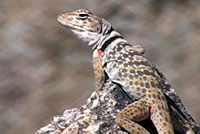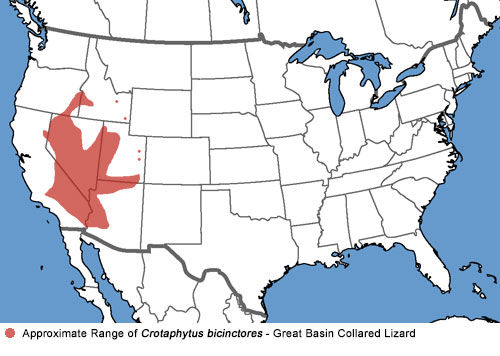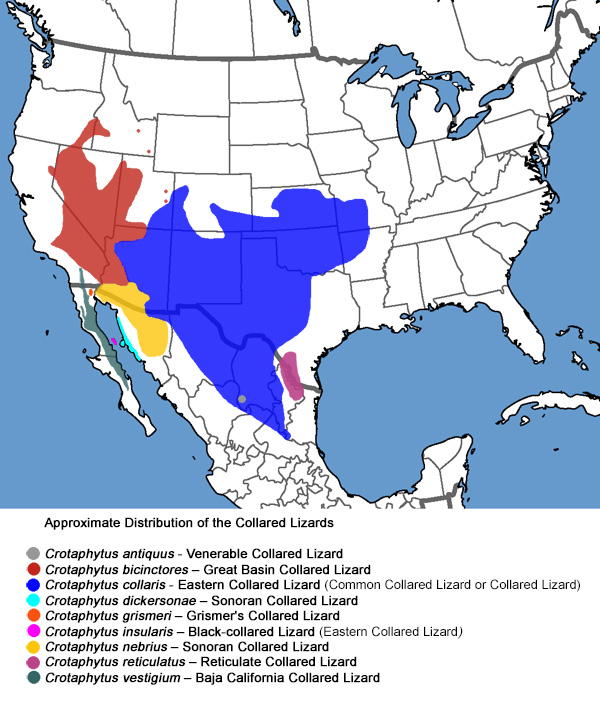Great Basin Collared Lizard - Crotaphytus bicinctores
Smith and Tanner, 1972Description • Taxonomy • Species Description • Scientific Name • Alt. Names • Similar Herps • References • Conservation Status
 |
|||||||||||||||||||||||||||||||||||||||||||||||||||
| Adult male | |||||||||||||||||||||||||||||||||||||||||||||||||||
 |
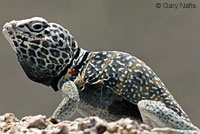 |
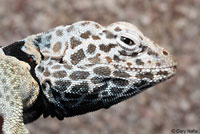 |
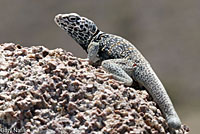 |
||||||||||||||||||||||||||||||||||||||||||||||||
| Adult male, Inyo County | Adult male defensive display, Inyo County |
Adult male, Inyo County | Adult male, Inyo County | ||||||||||||||||||||||||||||||||||||||||||||||||
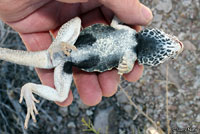 |
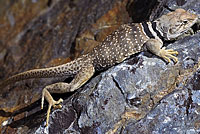 |
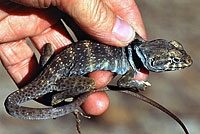 |
 |
||||||||||||||||||||||||||||||||||||||||||||||||
| Adult male, Inyo County | Adult, Inyo County | Adult female, Inyo County | |||||||||||||||||||||||||||||||||||||||||||||||||
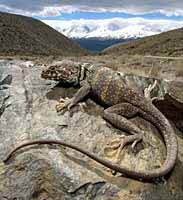 |
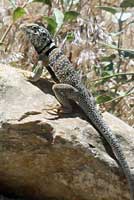 |
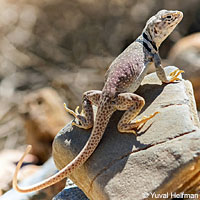 |
 |
||||||||||||||||||||||||||||||||||||||||||||||||
| Adult, Inyo County © 2005 Jeremiah Easter |
Adult male, Inyo County | Adult female, Inyo County © Yuval Helfman |
Adult female, Inyo County | ||||||||||||||||||||||||||||||||||||||||||||||||
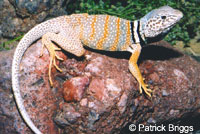 |
 |
 |
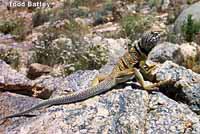 |
||||||||||||||||||||||||||||||||||||||||||||||||
| Adult Male, Inyo County © Patrick Briggs |
Adult Male, Imperial County © Patrick Briggs |
Adult female with breeding coloration, 6,000 ft., Inyo County. © Ceal Klingler | Adult male, Antelope Valley, Los Angeles County © Todd Battey |
||||||||||||||||||||||||||||||||||||||||||||||||
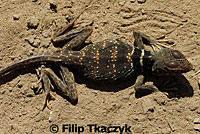 |
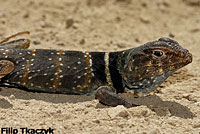 |
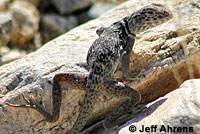 |
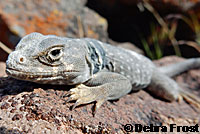 |
||||||||||||||||||||||||||||||||||||||||||||||||
| Collared Lizards in lava rock habitat tend to have dark coloring to match the dark rocks, as you can see on this adult from San Bernardino County. © Filip Tkaczyk | Adult, San Bernardino County © Jeff Ahrens |
Adult, Lassen County © Debra Frost | |||||||||||||||||||||||||||||||||||||||||||||||||
 |
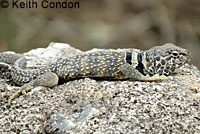 |
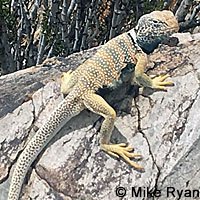 |
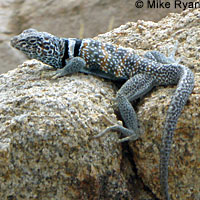 |
||||||||||||||||||||||||||||||||||||||||||||||||
| Adult male, Mono County © Keith Condon |
Adult, Mono County © Keith Condon |
Adult male, San Bernardino County © Mike Ryan |
Adult female, San Bernardino County © Mike Ryan |
||||||||||||||||||||||||||||||||||||||||||||||||
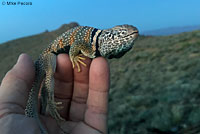 |
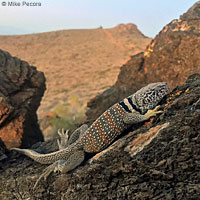 |
 |
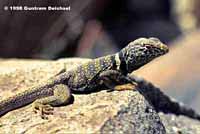 |
||||||||||||||||||||||||||||||||||||||||||||||||
| Adult male, Kern County © Mike Pecora | Adult male, San Bernardino County © Loren Prins |
Adult male, San Bernardino County © Guntram Deichsel |
|||||||||||||||||||||||||||||||||||||||||||||||||
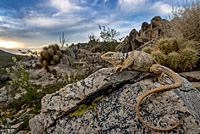 |
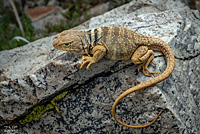 |
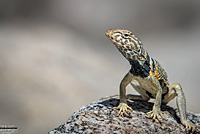 |
 |
||||||||||||||||||||||||||||||||||||||||||||||||
| Adult female, San Bernardino County © Zeev Nitzan Ginsburg |
Adult female, San Bernardino County © Zeev Nitzan Ginsburg |
Adult male, San Bernardino County © Zeev Nitzan Ginsburg |
Breeding colors on gravid adult female, Inyo County | ||||||||||||||||||||||||||||||||||||||||||||||||
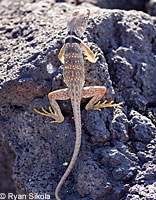 |
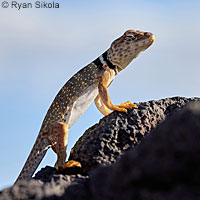 |
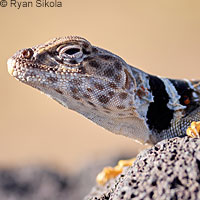 |
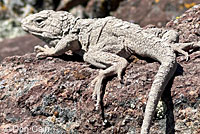 |
||||||||||||||||||||||||||||||||||||||||||||||||
| Adult female, Inyo County © Ryan Sikola | This adult lizard was observed in Lassen County in early April when they were just coming above ground after brumating during winter. This lizard is covered with dried mud, so maybe uts sheltering location got wet. © Don Cain | ||||||||||||||||||||||||||||||||||||||||||||||||||
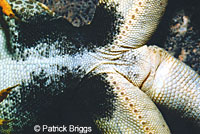 |
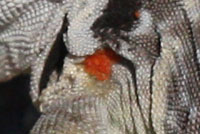 |
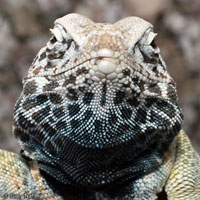 |
 |
||||||||||||||||||||||||||||||||||||||||||||||||
| Adult Male cloacal region, showing femoral pores, Imperial County © Patrick Briggs |
Wild collard lizards sometimes have clusters of red mites under folds of skin around their neck or behind their legs. | Adult males, like those shown here, have a broader head than females and black coloring on the throat, Inyo County |
|||||||||||||||||||||||||||||||||||||||||||||||||
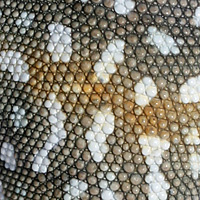 |
|||||||||||||||||||||||||||||||||||||||||||||||||||
| Collared lizards, genus Crotaphytus, have mostly granular scales. | |||||||||||||||||||||||||||||||||||||||||||||||||||
| Juveniles | |||||||||||||||||||||||||||||||||||||||||||||||||||
 |
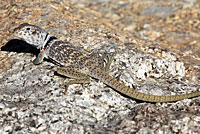 |
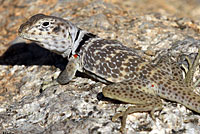 |
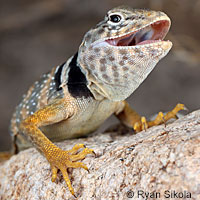 |
||||||||||||||||||||||||||||||||||||||||||||||||
| Juvenile, San Bernardino County | Juvenile, Inyo County © Ryan Sikola |
||||||||||||||||||||||||||||||||||||||||||||||||||
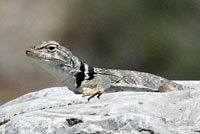 |
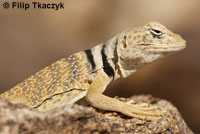 |
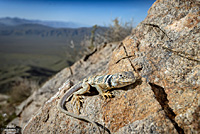 |
|||||||||||||||||||||||||||||||||||||||||||||||||
| Juvenile, Inyo county | Juvenile, San Bernardino County © Filip Tkaczyk |
Juvenile, San Bernardino County © Zeev Nitzan Ginsburg |
|||||||||||||||||||||||||||||||||||||||||||||||||
| Great Basin Collared Lizards From Outside California | |||||||||||||||||||||||||||||||||||||||||||||||||||
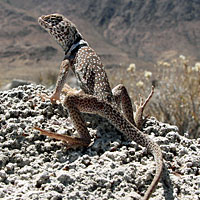 |
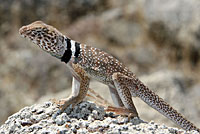 |
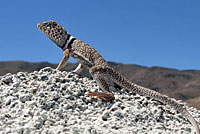 |
 |
||||||||||||||||||||||||||||||||||||||||||||||||
| Adult male, Washoe County, Nevada | |||||||||||||||||||||||||||||||||||||||||||||||||||
 |
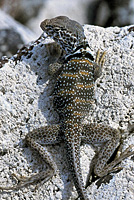 |
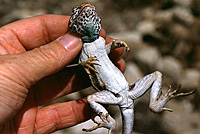 |
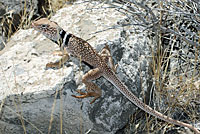 |
||||||||||||||||||||||||||||||||||||||||||||||||
| Adult male, Washoe County, Nevada | Adult male, Washoe County, Nevada | ||||||||||||||||||||||||||||||||||||||||||||||||||
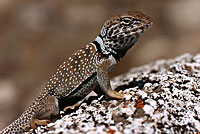 |
 |
 |
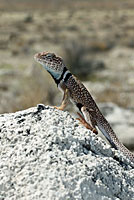 |
||||||||||||||||||||||||||||||||||||||||||||||||
| Adult male, Washoe County, Nevada | Juvenile, Washoe County, Nevada | Adult male, Washoe County, Nevada | |||||||||||||||||||||||||||||||||||||||||||||||||
| Feeding | |||||||||||||||||||||||||||||||||||||||||||||||||||
 |
 |
||||||||||||||||||||||||||||||||||||||||||||||||||
| A large male eating a small rodent on a cool day in March in Washoe County, Nevada. © Richard Lingo | |||||||||||||||||||||||||||||||||||||||||||||||||||
| Habitat | |||||||||||||||||||||||||||||||||||||||||||||||||||
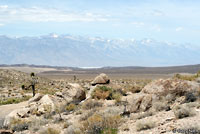 |
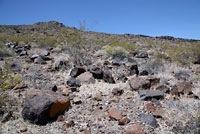 |
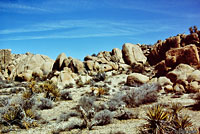 |
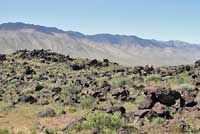 |
||||||||||||||||||||||||||||||||||||||||||||||||
| Habitat, Inyo County | Habitat, Inyo County | Habitat, San Bernardino County | Habitat, Inyo County | ||||||||||||||||||||||||||||||||||||||||||||||||
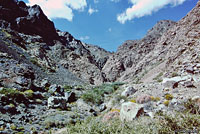 |
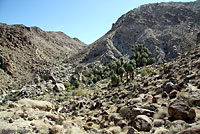 |
 |
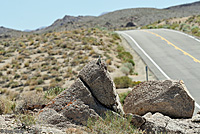 |
||||||||||||||||||||||||||||||||||||||||||||||||
| Habitat, Inyo Mountains, Inyo County | Habitat, San Bernardino County | Habitat, Inyo County | Lizard in habitat, Inyo County | ||||||||||||||||||||||||||||||||||||||||||||||||
| Short Videos | |||||||||||||||||||||||||||||||||||||||||||||||||||
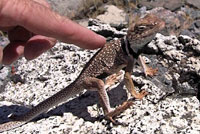 |
 |
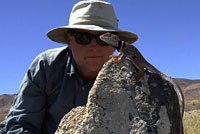 |
|||||||||||||||||||||||||||||||||||||||||||||||||
| On a sunny day with an air temperature of 91 degrees and rock temperatures so hot I couldn't lean my hand on them for support, a collared lizard lets me and the camera get so close to it that I can reach out and touch it on the back. This confuses the lizard but he doesn't run off until after I do it a second time. No need to use a noose when you can get this close. | A big male collared lizard lets me follow him around closely from rock to rock. | A posing collared lizard gets photobombed then runs away. | Two juvenile Great Basin Collared Lizards in the Mohave Desert. | ||||||||||||||||||||||||||||||||||||||||||||||||
|
|||||||||||||||||||||||||||||||||||||||||||||||||||
|
|||||||||||||||||||||||||||||||||||||||||||||||||||
|
The following conservation status listings for this animal are taken from the July 2025 State of California Special Animals List and the July 2025 Federally Listed Endangered and Threatened Animals of California list (unless indicated otherwise below.) Both lists are produced by multiple agencies every year, and sometimes more than once per year, so the conservation status listing information found below might not be from the most recent lists, but they don't change a great deal from year to year.. To make sure you are seeing the most recent listings, go to this California Department of Fish and Wildlife web page where you can search for and download both lists: https://www.wildlife.ca.gov/Data/CNDDB/Plants-and-Animals. A detailed explanation of the meaning of the status listing symbols can be found at the beginning of the two lists. For quick reference, I have included them on my Special Status Information page. If no status is listed here, the animal is not included on either list. This most likely indicates that there are no serious conservation concerns for the animal. To find out more about an animal's status you can also go to the NatureServe and IUCN websites to check their rankings. Check the current California Department of Fish and Wildlife sport fishing regulations to find out if this animal can be legally pursued and handled or collected with possession of a current fishing license. You can also look at the summary of the sport fishing regulations as they apply only to reptiles and amphibians that has been made for this website. This animal is not included on the Special Animals List, which indicates that there are no significant conservation concerns for it in California. |
||
| Organization | Status Listing | Notes |
| NatureServe Global Ranking | ||
| NatureServe State Ranking | ||
| U.S. Endangered Species Act (ESA) | None | |
| California Endangered Species Act (CESA) | None | |
| California Department of Fish and Wildlife | None | |
| Bureau of Land Management | None | |
| USDA Forest Service | None | |
| IUCN | ||
|
|
||
Return to the Top
© 2000 -



